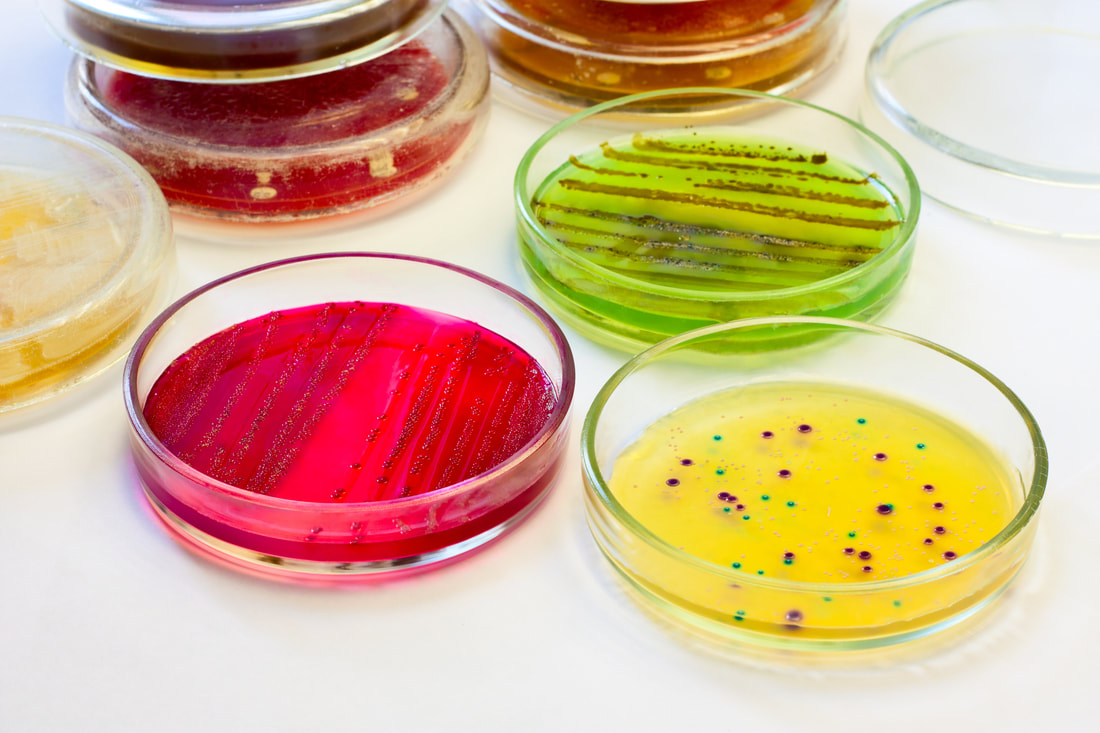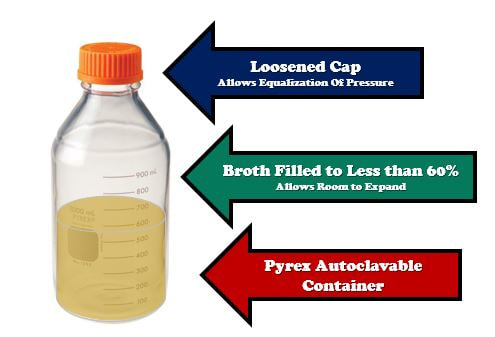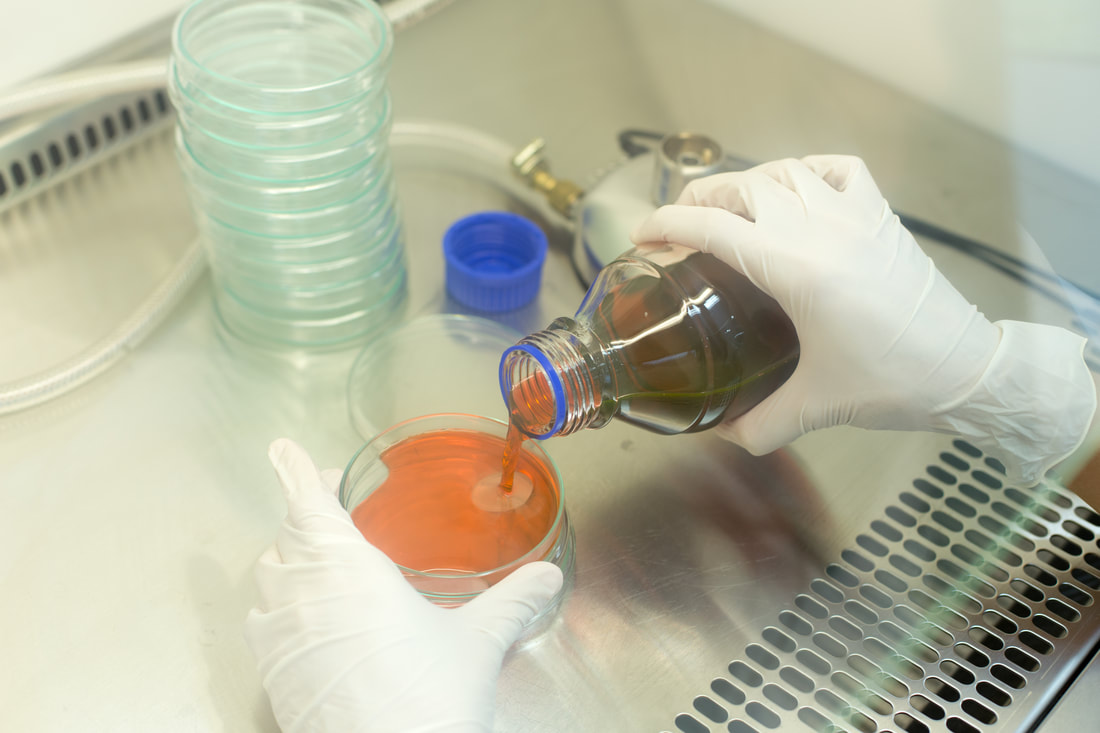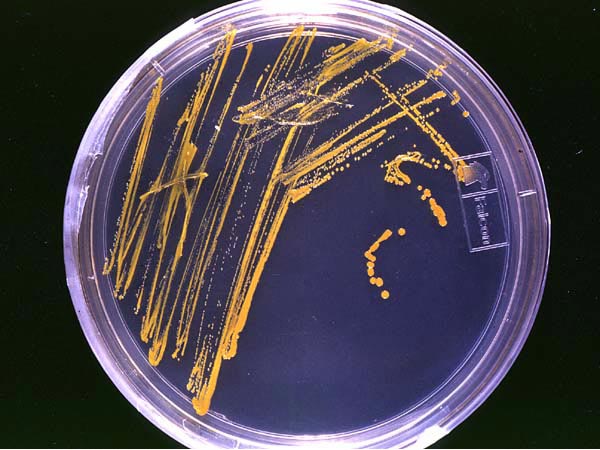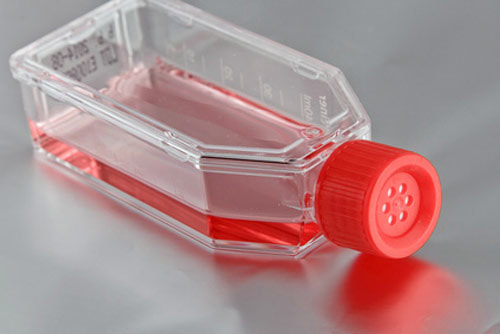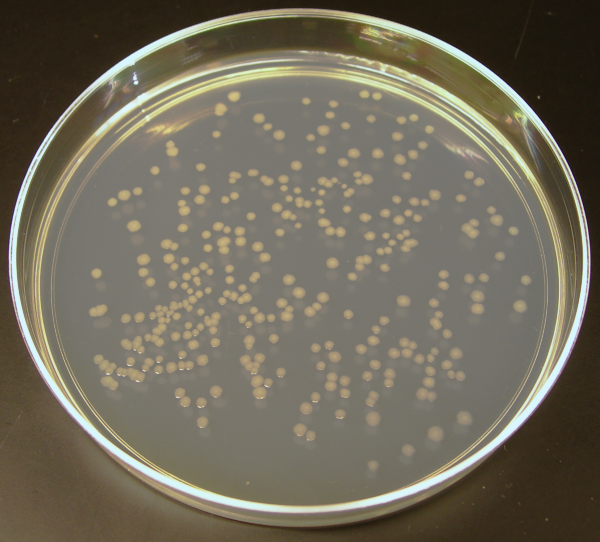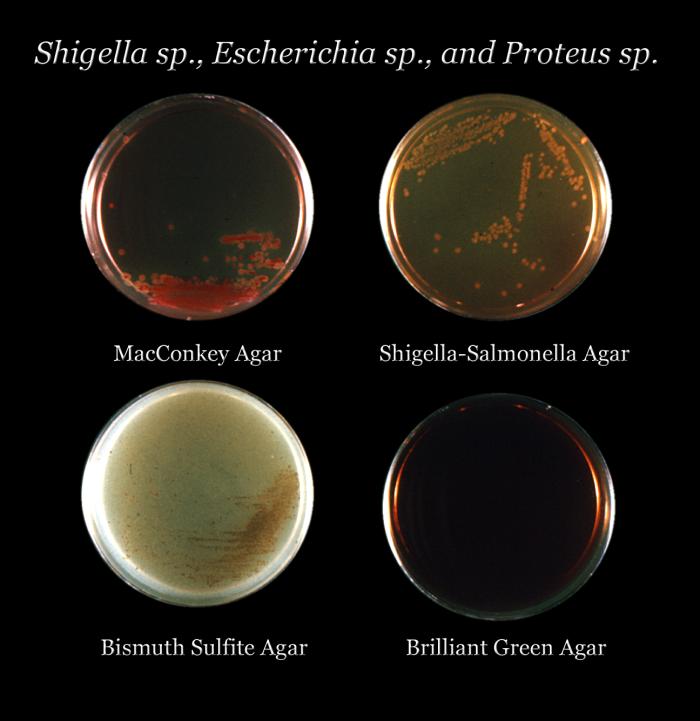Experiment 3: Aseptic Technique
|
|
What is a "cell culture"? The definition of a "cell culture" is the process of growing cells (or cell colonies) under controlled conditions for scientific purposes. This is almost always performed in a lab, or in some other sort of environment, other than the natural environment of the microorganism.
When we study cells, it is convenient to have a lot of them to study. We can add just a few selected cells of interest into a medium with all of the yummy nutrients they need to survive and reproduce. Since microorganisms reproduce using binary fission, we end up with a lot of identical cells. |

Microbiologists use the term growth to indicate an increase in a population of microbes rather than an increase in size. One of the reasons prokaryotic organisms, like bacteria, have been so successful for billions of years, is that they reproduce very quickly using a process called binary fission. Binary fission creates two genetically identical daughter cells from one single parent cell. This process is more simple than mitosis, which occurs in eukaryotic cells, and it requires less energy.
What you need to know --> Cells are really small. When we want to study them, we are not going to take one single cell and view it on a slide or run experiments on it... that would make no sense. How would you even keep track of just one cell! Instead, microbiologists will select the cell (or group of cells) that they are interested in, and they will grow them in culture

Growth, in terms of microbiology, refers to the number of individual organisms that make up a population of microbes. For example, when bacteria cells are allowed to grow on an agar plate, one single bacterial cell will reproduce via binary fission and give rise to a colony or genetically identical bacteria cells that were all generated from a single parent cell.
Culturing Microorganisms
|
|
Microbiologists collect a small sample of microbes from a given source (we call this small sample an "inoculum") and place them into a medium that contains the nutrients needed for growth. This process is called "inoculation". This creates a cell culture.
The medium can be in a liquid form (called broth) or in a somewhat solid, gelatin-like form (called agar/agarose). |
Growth Media
|
AGAR FACTS:
|
The most popular growth media is a nutrient-rich liquid known as LB Broth (Lysogeny broth). Some cells are able to grown free-floating in this type of media. However, most cells require some sort of surface to adhere to. For these cell, LB broth is mixed with a substance called "agar". The agar does not provide any nutrition, but it form a surface for cellular growth. Agar is added to the broth and heated in an autoclave for sterilization. When the mixture is cool enough to handle, yet hot enough to remain in liquid form, the agar can be poured into Petri dishes, culture plates, culture tubes, or test tubes. As the agar comes to room temperature, it will solidify into a firm solid/gelatinous material that has the nutrients from the LB broth. Microbial growth using an agar plate will yield individual colonies of cells that have been derived from a single parent cell (ideally). This method is used in clinical laboratories to test samples of feces, saliva, cerebrospinal fluid, or blood for the presence of microorganisms.
|
|
The Agar Slant
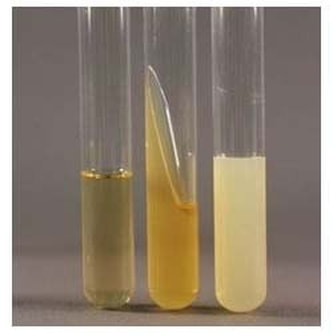 Nutrient Broth and Slant Culture
Nutrient Broth and Slant Culture
The agar slant, is simply a test tube in which the warm liquefied agar was poured, then the test tube was oriented in a slanted position (approximatetely 45 degree angle) and the agar was allow to cool and solidify.
When inoculating an agar slant, draw the loop containing the inoculum very lightly over the surface in a zigzag formation while being careful not to break the surface. A needle can be used instead of a loop to inoculate an agar slant by stabbing the needle containing the inoculum into the agar.
When inoculating an agar slant, draw the loop containing the inoculum very lightly over the surface in a zigzag formation while being careful not to break the surface. A needle can be used instead of a loop to inoculate an agar slant by stabbing the needle containing the inoculum into the agar.
Aseptic Technique
An introduction to the concepts of Aseptic Technique:
What does "aseptic" mean? The word "aseptic" means "free from microorganisms". We use "aseptic techniques" to ensure that there is no "contamination" of unwanted or unintended microorganisms introduced into your cell cultures.
Streak Plate Procedure
|
|
|
|
"An inoculation loop, also called a smear loop, inoculation wand or microstreaker, is a simple tool used mainly by microbiologists to retrieve an inoculum from a culture of microorganisms. The loop is used in the cultivation of microbes on plates by transferring inoculum for streaking." https://en.wikipedia.org/wiki/Inoculation_loop
|
• Disinfect your bench top surface before beginning work. You should already be doing this before you start lab and after you are done with the lab.
• Loops and needles need to be sterilized in the Bunsen burner flame till red hot. Allow these implements to cool before doing any inoculations to prevent killing the organism. • The opening of sterile media tubes and the tube of microorganism that will be used to inoculate those sterile media tubes need to be flamed after opening and before closing. • Flame the loop or needle after each inoculation and before a new inoculation is done. This kills any leftover organism that is still on the instrument. • Loops are used to transfer from liquid media to liquid media or petri plates. Needles are used to transfer from solid media to other solid media or petri plates. An inoculation needle is used for retrieving solid or dense media. An inoculation loop is used to retrieve liquid media. • Hold the cap of the tube with your little finger. NEVER place the cap on the bench top.
|
Procedure:
BEFORE YOU BEGIN:
- Disinfect working area (see instructions).
- Label all sterile media with your name, media type, organism used, and lab hour.
- Label plates on the bottom (not the lid). DO NOT label the white part of the tube.
Transfer of E.coli from a Plate to a Sterile Slant
|
How to Transfer of E.coli from a Plate to a Sterile Slant
Transfer of E.coli from a Broth to a Sterile Plate
|
Transfer of E.coli from a Broth to a Sterile Plate
- Flame the inoculating loop or needle (your preference) until it is red hot, allow to cool.
- Remove the cap from the broth and flame the opening. Hold the cap with your little finger that is holding the loop/needle. Use the loop/needle to pick up organism from the broth.
- Flame the opening of the broth before closing.
- Pick up your sterile plate. Open the lid just enough to stick the loop/needle inside and glide the instrument over the surface of the agar. DO NOT gouge the agar.
- Cover the plate back up and flame the loop/needle.
- Put slants, broths, and plates into the plate rack or the tube rack at the back of the class that is labeled with the experiment name.
Next lab period
Results
Obtain both tubes and your plates. Examine them for growth and uniformity of the cultures. Ask yourself these questions.
Results
Obtain both tubes and your plates. Examine them for growth and uniformity of the cultures. Ask yourself these questions.
- Were the three transfers you did successful?
- How can you tell that the transfers were successful?
- If the transfers were not successful, what may have happened?
- Was there any evidence of another organism (i.e. Fungus) in any of your culture tubes or on your plate? If so what may have happened?


